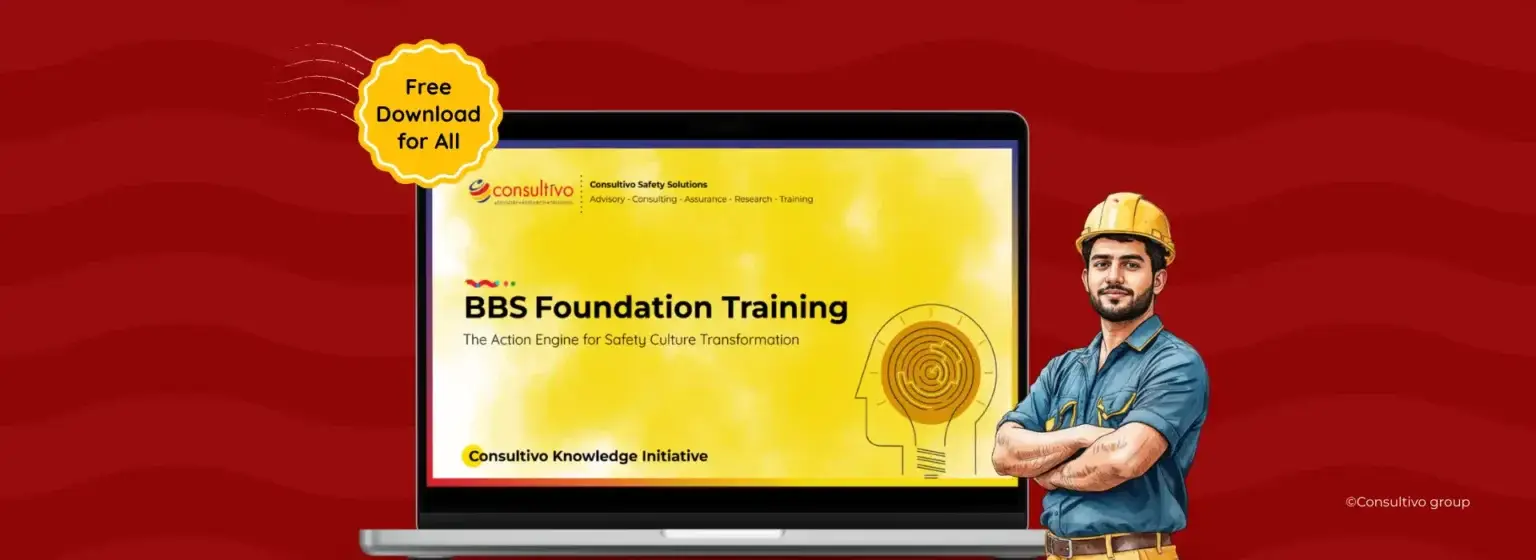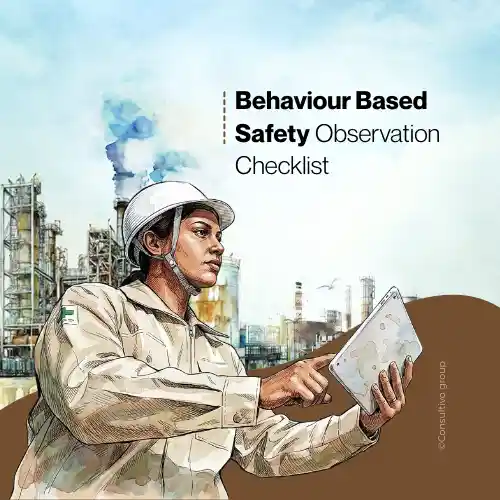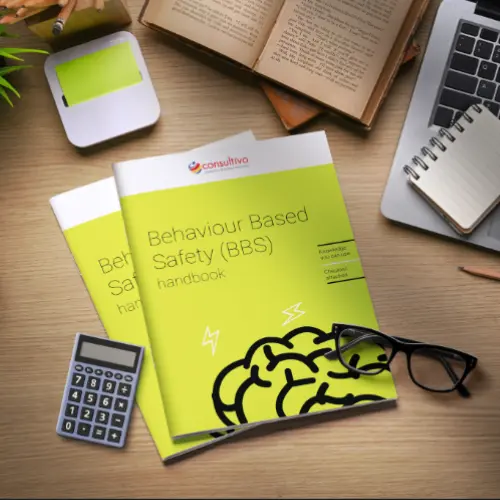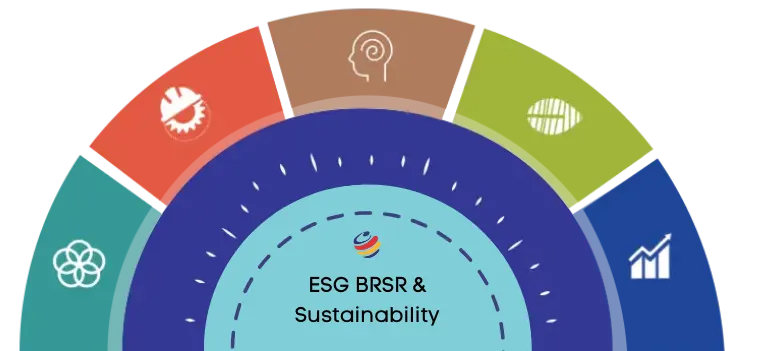A practical, easy-to-understand behaviour based safety ppt designed to build awareness, strengthen skills, and support safer workplaces.
This free resource from Consultivo’s Knowledge Bank helps organisations understand people, behaviour, and safety culture in the workplace.
Why this BBS presentation?
This BBS safety ppt is not a lightweight or basic deck.
It is a part of Consultivo’s pro-bono initiative to strengthen safety leadership, behavioural awareness, and human performance across industries.
The presentation is directly derived from our internal 200+ master training slides and simplified for foundation-level users.
You will find:
- Behaviour fundamentals
- Unsafe acts and unsafe conditions
- The ABC Model (Antecedent → Behaviour → Consequence)
- Observation, feedback, and reinforcement
- Human factors, errors, and violations
- The link between behaviour and safety culture in the workplace
- Heinrich’s triangle / safety triangle explained simply
- BBS implementation steps
- Skills required for observers and supervisors
- Behaviour-to-culture cycle illustration
- Reflection questions for team discussions
High-quality, professionally designed, and ready to use for internal training, toolbox talks, and awareness sessions.
Perfect for EHS teams, supervisors, trainers, and behaviour champions.
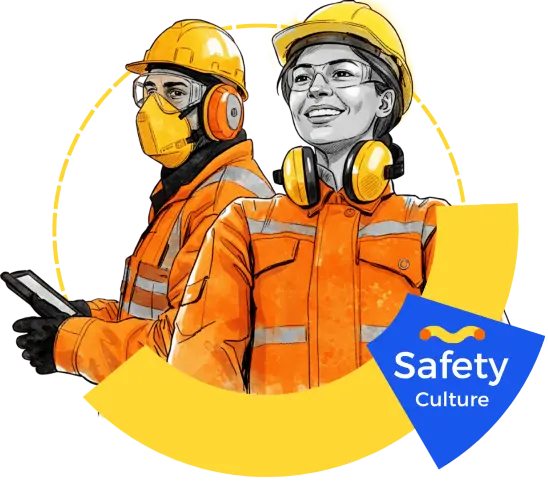
Start your BBS safety development journey
What you’ll learn from the behaviour-based safety ppt
Behaviour basics made simple
Understand what drives human behaviour, why unsafe acts happen, and how behaviour influences incident outcomes.
The ABC model of behaviour
A clear explanation of how antecedents and consequences shape daily actions.
Observation & feedback skills
Practical guidance on how to observe, communicate, and reinforce safe behaviours.
Linking behaviour with culture
How consistent behaviours shape culture — and how culture influences safe/unsafe habits.
BBS implementation framework
A simple 3-step roadmap:
- Diagnostic & Foundation
- Observation & Data Collection
- Analysis & Reinforcement
People → Skills → Behaviour → Culture cycle
A powerful visual representation of how capability building leads to cultural transformation.
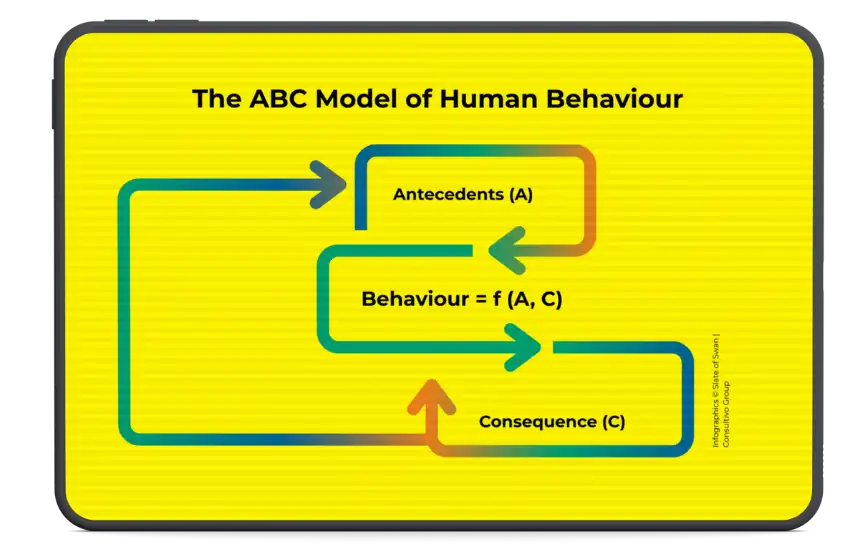
Who should use this BBS ppt?
- EHS managers, officers, and coordinators
- Supervisors and frontline leaders
- HR and learning teams
- Internal trainers
- BBS observers and champions
- Anyone influencing behaviour and H&S culture
It is also suitable for induction and refresher training.
Additional resources included
Along with the behaviour based safety ppt, users get access to:
- Behaviour definitions
- Lagging vs leading indicators
- BBS success factors
- Behaviour checklist examples
- Culture integration insights
- High-quality illustrations to explain concepts visually
Ideal for those looking for:
- Behaviour based safety training ppt
- Behaviour based safety training ppt in Hindi (coming soon)
- Behaviour based safety training pdf versions

Explore our behaviour based safety training
Strengthen your behavioural safety journey with Consultivo
Consultivo supports organisations with behavioural diagnostics, leadership development, and culture transformation.
Our approach integrates behavioural science, human factors, and sustainability principles.
You may explore:
Behavioural safety services
Our BBS consultants help you design, implement, and evaluate behaviour-based safety systems.
Culture diagnostics: The Consultivo SMILe model
A research-backed framework to measure and improve organisational culture.
High-quality, professionally designed, and ready to use for internal training, toolbox talks, and awareness sessions.
Perfect for EHS teams, supervisors, trainers, and behaviour champions.
Safety leadership & capability building
Strengthening the skills required to coach, influence, and drive change.
How BBS supports safer workplaces
Behaviour influences more than 80% of safety outcomes.
A structured approach helps organisations reduce at-risk behaviours, strengthen leadership, and build a positive culture.
This BBS ppt helps you
- Understand behaviour patterns
- Identify and reduce risk-taking
- Improve engagement
- Reinforce safe habits
- Build a proactive ecosystem
- Support the long-term development of a strong culture
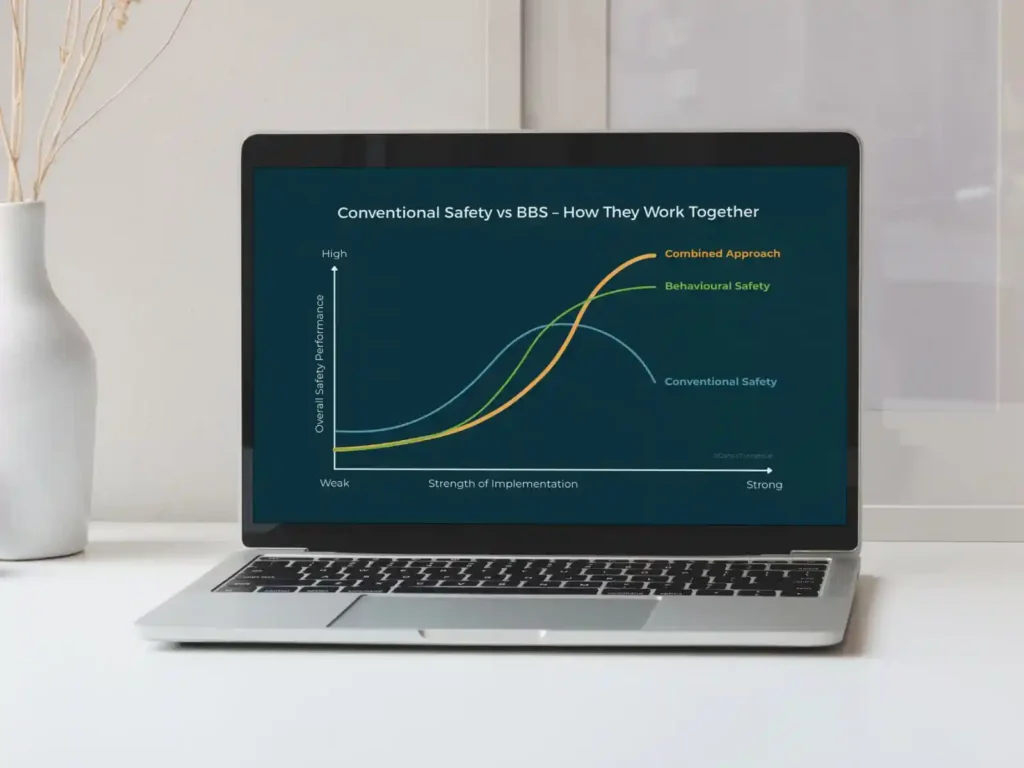
This behaviour-based safety powerpoint presentation is available for free download to support capability-building across industries.
👉 Get the BBS training ppt – Free download
It’s ideal for classroom sessions, inductions, awareness campaigns, toolbox meetings, and internal training.
Looking for custom BBS training or culture transformation?
Consultivo provides expert guidance in:
- Behavioural diagnostics
- Culture assessments using the Consultivo SMILe model
- Leadership alignment
- Advanced BBS implementation
- Sustainment strategies
- Behaviour coaching
If you need a customised version of this BBS ppt, multi-language editions, or organisation-specific case studies, we can help.

Frequently Asked Questions
Is this BBS ppt free to download?
Yes. It is part of Consultivo’s commitment to capability-building and thought leadership.
Can I use the presentation for employee training?
Yes, absolutely. It’s designed for internal, non-commercial use.
Is the BBS ppt available in Hindi?
A behaviour-based safety training ppt in Hindi is being developed. It will be available as a paid product.
Can I request a customised version?
Yes. Contact our team for branded, industry-specific, or advanced BBS content.
High-quality, professionally designed, and ready to use for internal training, toolbox talks, and awareness sessions.
Perfect for EHS teams, supervisors, trainers, and behaviour champions.
Safety Culture Transformation
Solution Areas
Related blogs
Download the Behaviour-Based Safety (BBS) – Foundation Training Presentation
Share this post
Category: Blog
About the author
CEO and Chief Mentor of Consultivo
Saikat Basu is an experienced strategic and operational risk management professional with a strong global track record in ESG consulting, auditing, and training. Passionate about capacity building, he has delivered numerous programmes across sectors, helping organisations strengthen safety, sustainability, and responsible business performance.
He is the principal architect and co-creator of Consultivo’s SMILe Safety Culture Transformation Framework, integrating behavioural science with practical organisational change. Saikat has worked with 200+ international and national standards in ESG, safety, and sustainability assurance.
He serves as a jury member for leading SHE, Environment, and Social Impact awards, and is a visiting faculty at various academic and industry platforms. A committed writer and thought leader, Saikat regularly contributes insights on safety culture, behavioural safety, ESG, risk management and responsible business.
Related insights
View more in Impact Stories | Blogs | Knowledge Bank | News and Events




